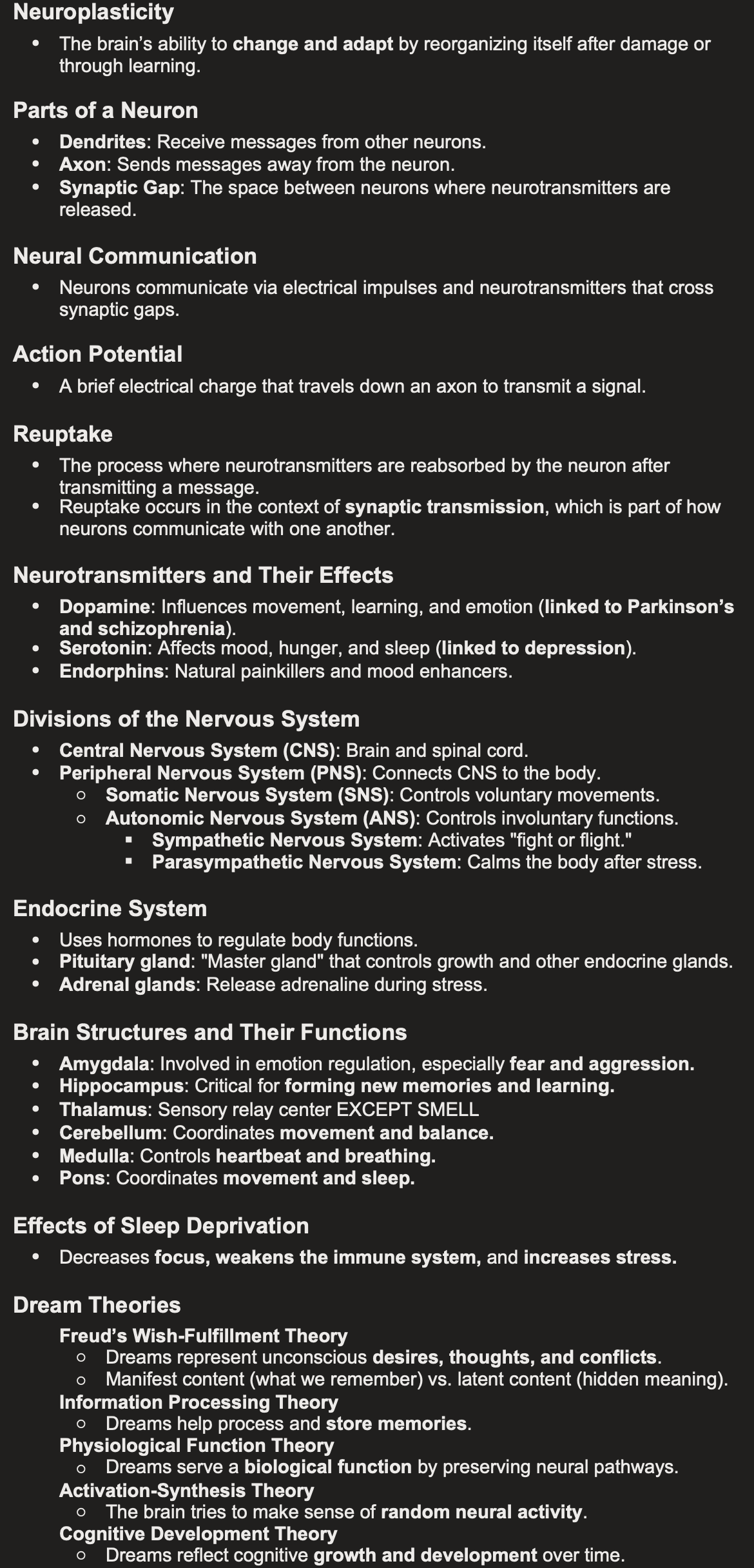Chapter 2: The Biology of Behavior and Consciousness
Neuroplasticity
The brain’s ability to change and adapt by reorganizing itself after damage or through learning.
Parts of a Neuron
Dendrites: Receive messages from other neurons.
Axon: Sends messages away from the neuron.
Synaptic Gap: The space between neurons where neurotransmitters are released.
Neural Communication
Neurons communicate via electrical impulses and neurotransmitters that cross synaptic gaps.
Action Potential
A brief electrical charge that travels down an axon to transmit a signal.
Reuptake
The process where neurotransmitters are reabsorbed by the neuron after transmitting a message.
Reuptake occurs in the context of synaptic transmission, which is part of how neurons communicate with one another.
Neurotransmitters and Their Effects
Dopamine: Influences movement, learning, and emotion (linked to Parkinson’s and schizophrenia).
Serotonin: Affects mood, hunger, and sleep (linked to depression).
Endorphins: Natural painkillers and mood enhancers.
Divisions of the Nervous System
Central Nervous System (CNS): Brain and spinal cord.
Peripheral Nervous System (PNS): Connects CNS to the body.
Somatic Nervous System (SNS): Controls voluntary movements.
Autonomic Nervous System (ANS): Controls involuntary functions.
Sympathetic Nervous System: Activates "fight or flight."
Parasympathetic Nervous System: Calms the body after stress.
Endocrine System
Uses hormones to regulate body functions.
Pituitary gland: "Master gland" that controls growth and other endocrine glands.
Adrenal glands: Release adrenaline during stress.
Brain Structures and Their Functions
Amygdala: Involved in emotion regulation, especially fear and aggression.
Hippocampus: Critical for forming new memories and learning.
Thalamus: Sensory relay center EXCEPT SMELL
Cerebellum: Coordinates movement and balance.
Medulla: Controls heartbeat and breathing.
Pons: Coordinates movement and sleep.
Effects of Sleep Deprivation
Decreases focus, weakens the immune system, and increases stress.
Dream Theories
Freud’s Wish-Fulfillment Theory
Dreams represent unconscious desires, thoughts, and conflicts.
Manifest content (what we remember) vs. latent content (hidden meaning).
Information Processing Theory
Dreams help process and store memories.
Physiological Function Theory
Dreams serve a biological function by preserving neural pathways.
Activation-Synthesis Theory
The brain tries to make sense of random neural activity.
Cognitive Development Theory
Dreams reflect cognitive growth and development over time.
